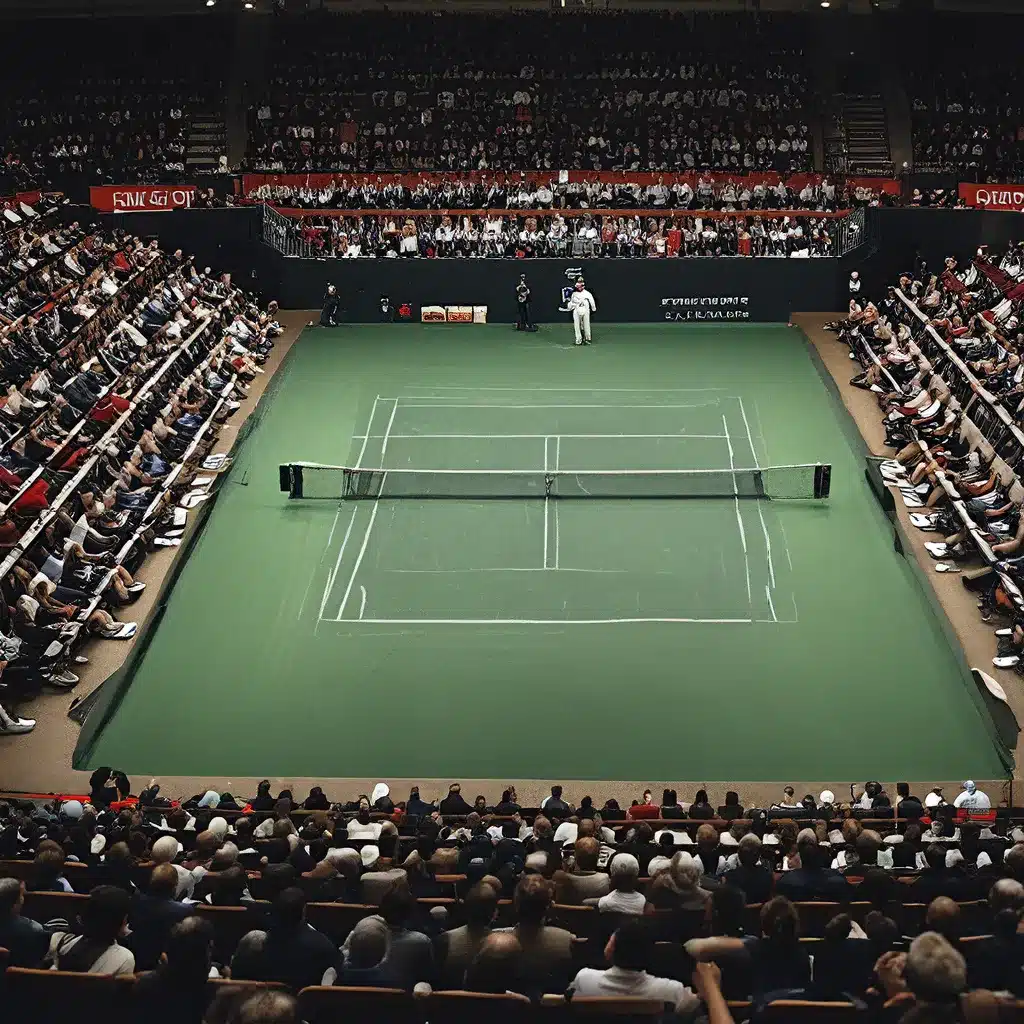
The Geneva Open is a prestigious annual tennis tournament that has captivated sports enthusiasts worldwide for decades. Nestled in the heart of the picturesque city of Geneva, Switzerland, this event has become a cherished tradition, drawing in top-ranking players and passionate fans alike. As one of the premier clay court tournaments on the ATP Tour, the Geneva Open has earned its place as a must-attend event for any true tennis aficionado.
The Roots of the Geneva Open
The origins of the Geneva Open can be traced back to the early 20th century, when the first edition of the tournament was held in 1917. At the time, it was known as the International Championships of Switzerland, a title that reflected the event’s growing reputation as a significant international tennis competition. Over the years, the tournament has undergone various name changes, including the Coupe de Genève and the Tournoi de Genève, before settling on its current moniker, the Geneva Open, in the late 1970s.
One of the key factors that has contributed to the Geneva Open’s longevity and prestige is its location. Situated in the picturesque city of Geneva, the tournament has benefited from the city’s rich cultural heritage and stunning natural surroundings. The tournament’s venue, the Tennis Club de Genève, is nestled along the banks of Lake Geneva, providing a breathtaking backdrop for the matches. The club’s well-maintained clay courts, combined with the city’s mild climate, have made it an ideal location for a prestigious clay court tournament.
The Evolution of the Geneva Open
Over the decades, the Geneva Open has undergone significant changes and adaptations to keep pace with the ever-evolving world of professional tennis. In the 1960s, the tournament gained recognition as one of the leading clay court events on the European circuit, attracting some of the sport’s biggest names at the time.
As the years passed, the Geneva Open’s reputation continued to grow, solidifying its status as a must-attend event for many of the world’s top players. The tournament’s prestige was further bolstered by its inclusion in the prestigious Grand Prix circuit in the 1970s, which brought even greater exposure and attracted a wider international audience.
In the modern era, the Geneva Open has maintained its position as a premier clay court tournament, consistently hosting a star-studded field of players. The tournament’s organizers have worked tirelessly to enhance the spectator experience, introducing new amenities and upgrading the facilities to ensure that both players and fans enjoy a world-class event.
The Competitive Landscape
The Geneva Open has long been a battleground for some of the greatest names in tennis history. Over the years, the tournament has witnessed the dominance of legendary players such as Rafael Nadal, Novak Djokovic, and Roger Federer, who have all etched their names into the tournament’s illustrious records.
The competitive landscape of the Geneva Open has evolved alongside the sport itself, with younger, up-and-coming players challenging the established stars and vying for the prestigious title. In recent years, the tournament has seen the emergence of exciting new talent, adding an extra layer of excitement and unpredictability to the proceedings.
One of the unique aspects of the Geneva Open is its ability to showcase the versatility and adaptability of the world’s top players. The tournament’s clay court surface requires a distinct set of skills, forcing players to adjust their strategies and tactics to succeed on the slow, high-bouncing surface. This has led to memorable and closely contested matches, as players battle to overcome the unique challenges presented by the clay.
The Impact on the Local Community
The Geneva Open’s significance extends far beyond the confines of the tennis court. The tournament has become an integral part of the city’s cultural fabric, with the event drawing in thousands of spectators from around the world. The influx of visitors has had a significant economic impact on the local community, with hotels, restaurants, and other businesses benefiting from the increased foot traffic.
Moreover, the Geneva Open has become a source of civic pride for the people of Geneva. The tournament’s success has helped to cement the city’s reputation as a hub for elite sports and cultural events, further enhancing its appeal as a desirable destination for both tourists and residents alike.
The Future of the Geneva Open
As the Geneva Open looks towards the future, there is a sense of cautious optimism and a commitment to maintaining the tournament’s status as a premier event on the ATP Tour. The organizers have recognized the need to adapt to the changing demands of modern sports entertainment, and they have invested in upgrades and improvements to ensure that the Geneva Open continues to captivate audiences for years to come.
One of the key challenges facing the tournament is the increasingly competitive landscape of professional tennis, with new events and initiatives vying for the attention of players and fans. The Geneva Open’s organizers will likely need to continue innovating, exploring new ways to engage with the audience and differentiate the tournament from its competitors.
Despite these challenges, the future of the Geneva Open remains bright. The tournament’s rich history, picturesque setting, and dedicated fan base suggest that it will continue to be a must-attend event for tennis enthusiasts worldwide. As the sport evolves, the Geneva Open will undoubtedly continue to adapt and evolve, cementing its place as one of the most prestigious and beloved clay court tournaments in the world.

